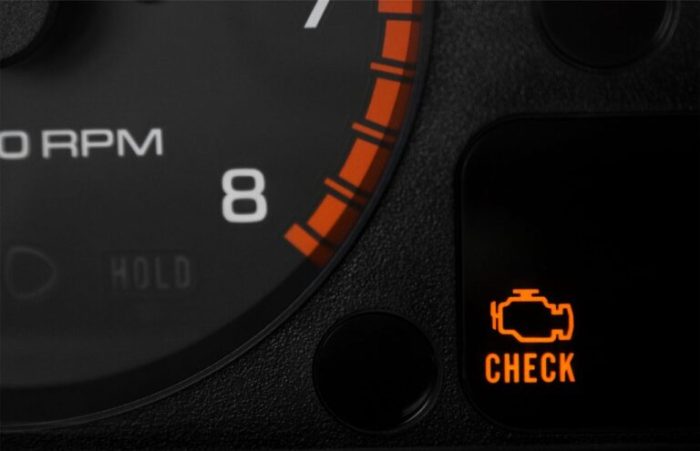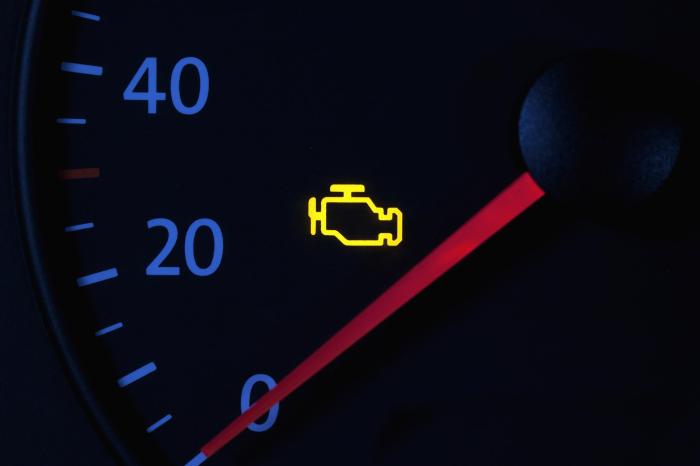Why is my check engine light flashing? That’s a question every driver dreads. Seeing that ominous blinking light can send a jolt of panic, especially if you’re not sure what it means. This isn’t just a minor inconvenience; a flashing check engine light usually signals a serious problem that needs immediate attention. Ignoring it could lead to costly repairs or even a breakdown on the side of the road.
This guide will break down the potential causes, what to do immediately, and how to prevent future issues. Let’s get started and get you back on the road safely.
The difference between a solid and flashing check engine light is crucial. A solid light usually indicates a problem that’s not immediately critical, while a flashing light means you have a serious issue that needs immediate attention – potentially causing damage to your engine. Pull over safely as soon as possible, and don’t continue driving until you’ve addressed the problem.
We’ll cover the most common culprits for a flashing light, how to diagnose the issue, and what preventative maintenance can help avoid this stressful situation in the future.
Understanding the Flashing Check Engine Light: Why Is My Check Engine Light Flashing?
That blinking check engine light? It’s not your car’s subtle way of saying “Hey, I need a new air freshener.” It’s a serious warning sign indicating a potentially damaging problem that requires immediate attention. Unlike a steady check engine light, which often signals a less urgent issue, a flashing light means you’re dealing with something that could cause significant damage to your engine, or even lead to a breakdown.
Understanding the difference is crucial for your car’s health and your safety.A solid check engine light usually indicates a less severe issue, something that your car’s computer has detected as needing attention but doesn’t pose an immediate threat to your engine. Think of it as a yellow caution light. A flashing check engine light, however, is a red alert.
It means there’s a problem that could cause immediate and potentially catastrophic engine damage if ignored. This could include misfires, which can cause damage to the catalytic converter, or issues with your oxygen sensors, impacting fuel efficiency and emissions.
Immediate Actions When the Check Engine Light Flashes
Seeing that flashing light demands immediate action. Ignoring it could lead to costly repairs. The first priority is to safely pull over and assess the situation. Driving with a flashing check engine light is risky, as the problem could worsen, potentially leaving you stranded. Continuing to drive could also cause irreparable damage to your engine.
Remember, it’s better to be safe than sorry, and a few minutes of inconvenience is far better than facing a significant repair bill or being stuck on the side of the road.
Safely Pulling Over and Assessing the Situation
Pulling over safely should always be your top priority. Here’s a step-by-step guide:
1. Signal your intentions
Turn on your hazard lights to alert other drivers that you’re slowing down and pulling over.
2. Find a safe location
Avoid stopping on blind curves, hills, or in areas with limited visibility. Aim for a well-lit, level area, ideally off the road entirely.
3. Engage your parking brake
Once stopped, immediately engage your parking brake to prevent the car from rolling.
4. Turn off the engine
Shutting off the engine prevents further damage, especially if the problem is related to a misfire or other critical engine component.
5. Assess the situation
Check your surroundings to ensure you’re in a safe location before exiting the vehicle. If you feel unsafe, remain in your car and call for roadside assistance.
6. Contact roadside assistance or a mechanic
If you’re unable to identify the problem, or if you’re uncomfortable attempting any repairs yourself, call for professional assistance. A tow truck or mobile mechanic can help diagnose the issue and get you back on the road safely.
Potential Causes of a Flashing Check Engine Light

A flashing check engine light is a serious warning sign, indicating a potentially critical issue that requires immediate attention. Ignoring a flashing light could lead to significant engine damage and expensive repairs. Unlike a steadily illuminated light, which usually points to a less urgent problem, a flashing light signals a problem that’s worsening rapidly and may cause immediate drivability issues.
This section will explore five common causes of this urgent warning.
Several factors contribute to a flashing check engine light, ranging from relatively minor issues to those that could severely damage your engine. The severity of the problem dictates the urgency of repair. Addressing these issues promptly is crucial for preventing further damage and maintaining your vehicle’s safety and reliability.
Ignition System Misfire
A misfire occurs when one or more cylinders fail to ignite properly. This can be due to faulty spark plugs, ignition coils, or wiring problems. Symptoms include a rough running engine, loss of power, and a noticeable decrease in fuel efficiency. In severe cases, you might even hear a backfiring sound from the exhaust. A misfire, if left unchecked, can lead to extensive catalytic converter damage.
The severity ranges from inconvenient to catastrophic depending on the extent and cause of the misfire. For example, a single misfiring cylinder might only slightly reduce performance, while multiple misfires could cause the engine to stall.
Catalytic Converter Issues
The catalytic converter is a critical emission control component that reduces harmful pollutants in your exhaust. A malfunctioning catalytic converter, often caused by an ongoing misfire or the use of low-quality fuel, can restrict exhaust flow. Symptoms include reduced engine power, a rattling sound from the exhaust, and a strong sulfur smell. The damage here can range from a simple repair to a complete converter replacement, which can be quite costly.
The longer the issue persists, the more likely extensive damage will occur.
Mass Airflow Sensor Malfunction
The mass airflow sensor (MAF) measures the amount of air entering the engine. A faulty MAF sensor provides inaccurate readings to the engine’s computer, leading to an improper air-fuel mixture. Symptoms include poor engine performance, hesitation during acceleration, and a rough idle. In some cases, the engine may even stall. A faulty MAF sensor is relatively inexpensive to replace, but the consequences of a prolonged malfunction can lead to more significant engine issues due to incorrect fuel mixture leading to potential damage over time.
Oxygen Sensor Problems
Oxygen sensors monitor the oxygen levels in the exhaust to help the engine control the air-fuel mixture. A malfunctioning oxygen sensor can lead to an inefficient and potentially damaging fuel mixture. Symptoms can be similar to a MAF sensor problem: reduced fuel efficiency, rough idling, and a possible check engine light. While a faulty oxygen sensor is relatively inexpensive to fix, prolonged issues can lead to decreased fuel economy and potential damage to other engine components over time, due to poor combustion.
Crankshaft Position Sensor Failure
The crankshaft position sensor (CKP) monitors the engine’s crankshaft rotation. A faulty CKP sensor prevents the engine control unit (ECU) from knowing the exact position of the crankshaft, preventing proper ignition timing. Symptoms include difficulty starting the engine, stalling, and a complete lack of engine power. This is a more serious issue, as it directly impacts the engine’s ability to function.
A faulty CKP sensor requires immediate attention; driving with a failed CKP sensor can result in significant engine damage and potential immobilization.
Diagnosing the Problem
A flashing check engine light indicates a serious issue requiring immediate attention. Ignoring it could lead to further damage and potentially dangerous driving conditions. Proper diagnosis is crucial to quickly and effectively resolve the problem. This section Artikels the steps a mechanic might take, the tools they’ll use, and how to interpret the results.
Effective diagnosis involves a systematic approach, combining visual inspection with the use of specialized tools. The severity of the issue and the vehicle’s make and model will influence the diagnostic process.
That flashing check engine light? Total nightmare, right? It could be anything from a loose gas cap to something way more serious, like needing major engine work – which reminds me, I saw a breakdown of Lamborghini Urus maintenance cost 2025 the other day; those bills are insane! Anyway, back to your light – get it checked ASAP to avoid a bigger, more expensive problem down the road.
Diagnostic Flowchart
The following flowchart illustrates a typical diagnostic process a mechanic might follow when confronted with a flashing check engine light:
[Start] --> Visual Inspection (look for obvious issues like loose gas cap, leaks) --> OBD-II Scanner (retrieve trouble codes) --> Code Interpretation (refer to manufacturer's specifications) --> Further Diagnostic Testing (if necessary, using multimeter, pressure gauges, etc.) --> Repair/Replacement of faulty component --> Clear trouble codes --> Test Drive --> [End (light off)]
Diagnostic Tools and Applications
Several tools aid in diagnosing the cause of a flashing check engine light.
Each tool offers unique capabilities.
So, your check engine light’s flashing? That usually means something’s seriously wrong, like a misfire or sensor issue. It’s totally different from the engineered sounds in luxury cars, like those described in this article on Luxury car soundscapes (fake engine noise) , where they actually add engine sounds. Anyway, back to your flashing light – get that checked ASAP before it becomes a bigger, more expensive problem!
| Tool | Application | Advantages | Limitations |
|---|---|---|---|
| OBD-II Scanner | Retrieves trouble codes (DTCs) from the vehicle’s onboard diagnostic system. | Provides a starting point for diagnosis, relatively inexpensive. | Codes can be generic or manufacturer-specific, may not pinpoint the exact cause. |
| Multimeter | Measures voltage, current, and resistance in various circuits. | Helps identify electrical problems, relatively inexpensive and versatile. | Requires understanding of electrical systems, can be time-consuming. |
| Pressure Gauge | Measures pressure in fuel lines, coolant system, etc. | Useful for diagnosing fuel delivery or cooling system issues. | Requires specialized adapters for different systems. |
| Smoke Machine | Identifies vacuum leaks in the intake system. | Helps pinpoint leaks that might trigger a flashing check engine light. | Requires specialized equipment. |
Interpreting Trouble Codes, Why is my check engine light flashing?
OBD-II scanners provide trouble codes (DTCs), which are alphanumeric codes indicating specific problems. Understanding these codes is critical for accurate diagnosis.
Codes typically consist of a letter (P for powertrain, B for body, C for chassis, U for network) followed by a number. For example, P0300 indicates a random misfire. A mechanic will use a code lookup tool or manufacturer’s documentation to determine the specific meaning of each code. Some codes are generic across various vehicle makes and models, while others are manufacturer-specific.
Once the code is identified, the mechanic can then consult repair manuals, online databases, or their own experience to determine the most likely cause and the appropriate repair procedure. For instance, a code indicating a faulty oxygen sensor might lead to the replacement of that sensor, while a code indicating a failing catalytic converter might require a more extensive repair.
Severe Issues Indicated by a Flashing Light
Ignoring a flashing check engine light is a serious gamble. It’s a clear indication that your car’s computer has detected a problem that could lead to significant engine damage, potentially leaving you stranded and facing expensive repairs. The flashing nature of the light signifies a more urgent issue than a steadily illuminated light, suggesting a problem that requires immediate attention to prevent further, potentially catastrophic, damage.A flashing check engine light means the engine is operating under conditions that could cause immediate and severe harm.
Continued driving with a rapidly flashing light risks causing irreparable damage to critical engine components. This can lead to a complete engine failure, requiring a costly replacement or extensive rebuild. The risk isn’t just financial; driving a vehicle with a severely compromised engine can be incredibly dangerous, potentially leading to accidents due to loss of power or control.
Catastrophic Engine Damage from Neglect
Ignoring a flashing check engine light can lead to a variety of catastrophic engine failures. For example, a misfire in one or more cylinders, indicated by a flashing light, can cause damage to the catalytic converter. The extremely high temperatures within the converter can melt it down if it’s forced to process unburnt fuel for an extended period.
This is not a cheap repair. Another scenario is a severely damaged oxygen sensor causing a rich or lean fuel mixture. A consistently lean mixture can lead to overheating and potentially melt pistons or even warp the cylinder head, requiring a major engine overhaul. A rich mixture, on the other hand, can lead to excessive carbon buildup, fouling spark plugs and potentially damaging the engine’s internal components.
The severity of the damage is directly related to how long you continue to drive with the flashing light.
Prevention and Maintenance
A flashing check engine light is rarely a pleasant surprise, but proactive maintenance significantly reduces the chances of encountering this stressful situation. Regular care keeps your car running smoothly and prevents many potential problems, saving you money and headaches down the line. Think of it like regular checkups at the doctor – better to catch small issues before they become major emergencies.Regular vehicle maintenance is key to preventing a flashing check engine light.
Ignoring minor issues can lead to bigger, more expensive problems later. This proactive approach not only saves you money on repairs but also improves your vehicle’s overall performance and longevity. Think of it as an investment in your vehicle’s health and your own peace of mind.
Preventative Maintenance Tasks
Consistent preventative maintenance dramatically decreases the likelihood of a flashing check engine light. This involves a combination of regular checks and scheduled services. By staying on top of these tasks, you’ll greatly reduce the risk of costly repairs and unexpected breakdowns.
- Regular Oil Changes: Following the manufacturer’s recommended oil change intervals is crucial. Dirty oil can lead to engine damage and trigger the check engine light. Using the correct type of oil is equally important.
- Fluid Checks: Regularly check and top off fluids like coolant, brake fluid, power steering fluid, and transmission fluid. Low fluid levels can cause significant problems and trigger warning lights.
- Air Filter Replacement: A clogged air filter restricts airflow to the engine, reducing performance and potentially triggering the check engine light. Replace it according to the manufacturer’s recommendations.
- Spark Plug Inspection: Worn or damaged spark plugs can misfire, causing the check engine light to flash. Inspect them regularly or have them checked during routine maintenance.
- Tire Pressure Monitoring: Maintain proper tire pressure. Incorrect tire pressure affects fuel efficiency and can even trigger the check engine light in some vehicles.
Importance of Timely Servicing and Professional Inspections
Timely servicing and professional inspections are not just recommended; they’re essential for preventing a flashing check engine light and maintaining your vehicle’s overall health. Ignoring these can lead to costly repairs and potential safety hazards.Professional mechanics possess the expertise and diagnostic tools to identify potential issues before they escalate. They can perform thorough inspections, identify worn parts, and recommend necessary repairs, preventing minor problems from becoming major headaches (and expenses).
Regular professional inspections provide an early warning system, allowing for timely interventions and avoiding the stress of a flashing check engine light. Think of it as preventative medicine for your car.
Regular professional inspections are a cost-effective way to avoid major repairs down the line.
Illustrating Potential Problems
A flashing check engine light isn’t just a minor inconvenience; it’s a serious signal that your car’s engine is experiencing a problem that could lead to significant damage or even a breakdown. Understanding what those problems
- look* like,
- sound* like, and
- smell* like can help you better understand the urgency of the situation. Let’s delve into some common culprits.
A flashing check engine light often points to a critical issue that needs immediate attention. Ignoring it can lead to costly repairs down the line, or even put you and others at risk.
Misfiring Cylinder
A misfiring cylinder occurs when one or more of your engine’s cylinders fail to ignite the air-fuel mixture properly. Visually, you might not see anything immediately wrong, but the car’s performance will tell the tale. You’ll likely experience a noticeable loss of power, rough idling, and a significant decrease in fuel efficiency. The sound is equally telling: a sputtering, popping, or backfiring noise from the exhaust will be readily apparent, especially when accelerating.
In severe cases, you might even smell unburnt fuel – a strong, acrid odor coming from the tailpipe. This is because the fuel isn’t being completely combusted, and raw fuel is being expelled. The severity depends on how many cylinders are misfiring and for how long the issue has persisted. For example, a single misfire might only cause a slight roughness, while multiple misfires can severely impact engine performance and potentially cause damage to the catalytic converter.
Severely Damaged Catalytic Converter
The catalytic converter is a crucial part of your exhaust system, responsible for converting harmful pollutants into less harmful substances. A severely damaged catalytic converter, often a result of a prolonged misfire or other engine problems, can exhibit several clear signs. Visually, a damaged converter might show signs of physical damage, such as cracks or holes in its casing.
However, the most noticeable indication is often the sound. A damaged converter often produces a rattling or rumbling noise from the exhaust system, particularly noticeable at higher RPMs. Additionally, you might notice a significant reduction in engine power, along with a strong sulfurous odor emanating from the exhaust. This smell is often described as rotten eggs and is a clear indication of a malfunctioning catalytic converter.
The internal structure of a severely damaged converter can be completely clogged with debris, further restricting exhaust flow and leading to engine damage. For instance, a completely blocked converter can cause a significant back pressure in the exhaust system, leading to a loss of engine power and potentially even engine damage.
Internal Engine Problems and Flashing Check Engine Light
The internal workings of an engine are complex, involving precisely timed movements of pistons, valves, and other components. A flashing check engine light can indicate a variety of problems within this intricate system. For example, a problem with the ignition system, such as a faulty spark plug or ignition coil, can prevent the air-fuel mixture from igniting properly in one or more cylinders, resulting in a misfire and the flashing light.
Similarly, problems with the fuel delivery system, such as a clogged fuel injector or a malfunctioning fuel pump, can lead to an insufficient supply of fuel to the cylinders, causing misfires and triggering the light. Even issues with the engine’s sensors, which monitor various engine parameters, can cause the system to detect a problem and illuminate the light.
Consider a situation where a crankshaft position sensor malfunctions. This sensor is critical for determining the engine’s rotational speed and position. A faulty sensor could lead to incorrect fuel injection timing, resulting in misfires and the flashing check engine light. The severity of the issue depends on the specific component malfunctioning and the extent of the damage.
In many cases, the problem can be addressed with relatively simple repairs, while others may require more extensive and costly repairs.
Summary

So, your check engine light is flashing? Don’t panic, but do act fast. Understanding the potential severity of a flashing check engine light is key to avoiding major engine damage and expensive repairs. By following the steps Artikeld above – pulling over safely, diagnosing the problem (or getting it professionally diagnosed), and understanding preventative maintenance – you can minimize the risk of future issues.
Remember, a little preventative care goes a long way in keeping your car running smoothly and reliably. Get that light checked ASAP!









